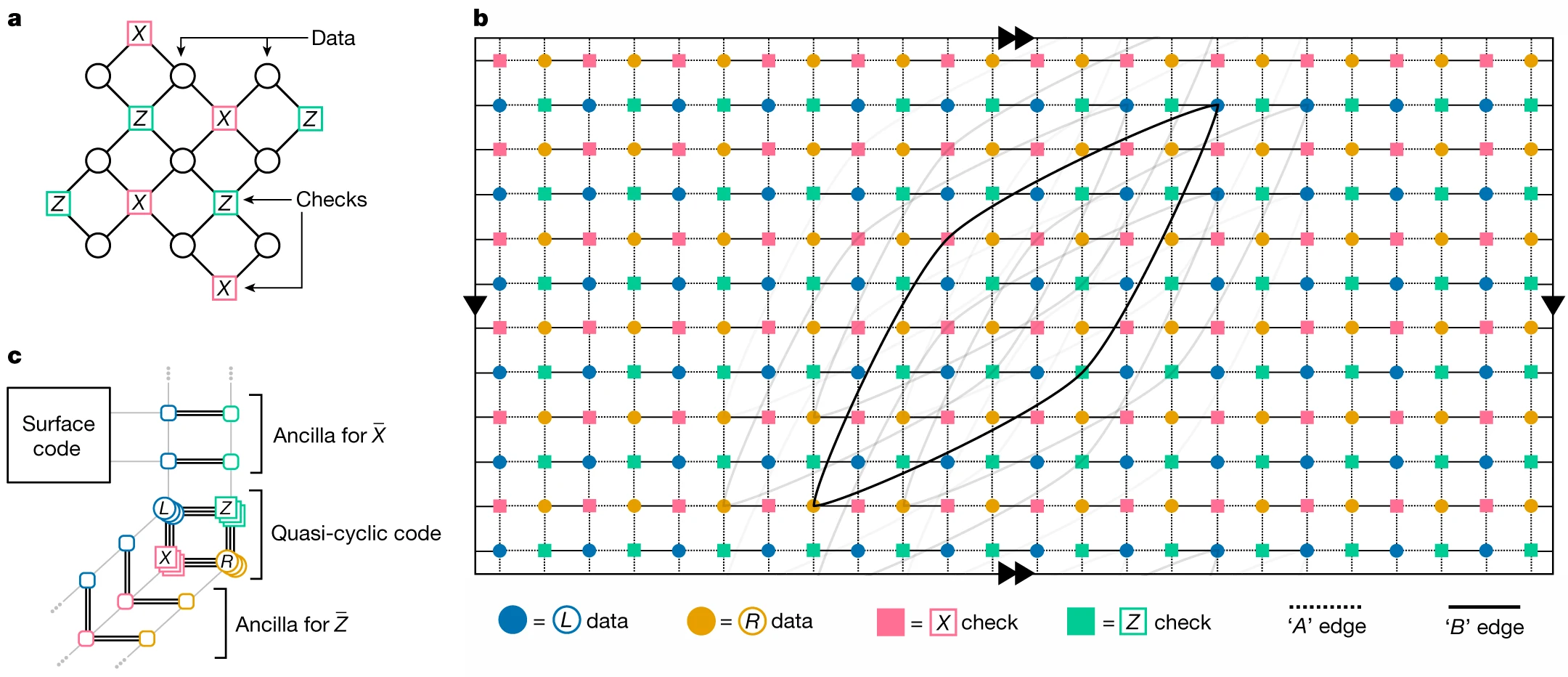IBM (the company behind the most popular quantum programming language) has developed a quantum error-correcting code that is about 10 times more efficient than previous methods, marking a significant advancement in quantum computing. The research, published in the scientific journal Nature, demonstrates that quantum computers can now run quantum circuits more effectively than classical computers. The new code, named the gross code, corrects errors inherent to quantum systems, a process known as quantum error correction. This development is a crucial step towards running quantum circuits with a billion gates or more on IBM’s superconducting transmon qubit hardware.
Quantum Computing: A Move Forward in Error Correction
Quantum computing, a field that has been gaining momentum over the past few years, has recently seen a significant breakthrough in the area of error correction. IBM, a prominent player in the field, has developed a quantum error-correcting code that is approximately ten times more efficient than previous methods. This development, detailed in a paper published in the scientific journal Nature, is a significant milestone in quantum computing research.
Quantum Error Correction: The Challenge
Quantum error correction is a critical aspect of quantum computing. Quantum information is fragile and susceptible to various forms of noise, including environmental noise, noise from control electronics, hardware imperfections, and errors in state preparation and measurement. To run quantum circuits with millions to billions of gates, quantum error correction is essential.
However, achieving quantum error correction in a scalable and fault-tolerant way has been a challenge. Traditional methods required scales of one million or more physical qubits, making them impractical for real-world application. IBM’s new method, however, significantly reduces this overhead, bringing error correction within reach.
The Gross Code: A New Approach to Error Correction
IBM’s new approach to error correction involves a new code, referred to as the gross code. This code is part of IBM’s broader strategy to make quantum computing more practical and useful. While error correction is not a completely solved problem, the gross code provides a clear path towards running quantum circuits with a billion gates or more on superconducting transmon qubit hardware.
The gross code works by building redundancy into quantum circuits. Many qubits work together to protect a piece of quantum information that a single qubit might lose to errors and noise. This approach is more complex than classical error correction, which involves storing the same piece of information across multiple bits. However, it is a more efficient and practical solution for quantum computing.
The Impact of the Gross Code
The gross code is a significant development in the field of quantum computing. It reduces the number of extra qubits needed for error correction, making quantum computing more scalable and practical. The gross code requires 144 qubits to store data and uses another 144 qubits to check for errors, making it significantly more efficient than previous methods.
This development is a milestone in quantum computing research. It opens up new possibilities for the use of quantum computing in various fields and industries. While there is still work to be done in finding even more efficient architectures and performing error-corrected calculations using these codes, the future of error correction in quantum computing looks promising.
The Future of Quantum Computing
This breakthrough in quantum error correction is part of IBM’s broader strategy to advance quantum computing and roadmap. IBM researchers and partners worldwide are exploring practical applications of quantum computing with existing quantum systems. Error mitigation techniques, which reduce or eliminate the effect of noise when calculating observables, have already brought us into the era of quantum utility.
However, error mitigation has its limitations. It requires running the same executions repeatedly so that classical computers can use statistical methods to extract an accurate result. This limits the scale of the programs that can be run. The development of the gross code and other advancements in error correction will allow us to transition from running circuits with 15,000 gates to 100 million, or even 1 billion gates, significantly expanding the potential applications of quantum computing.
External Link: Click Here For More

